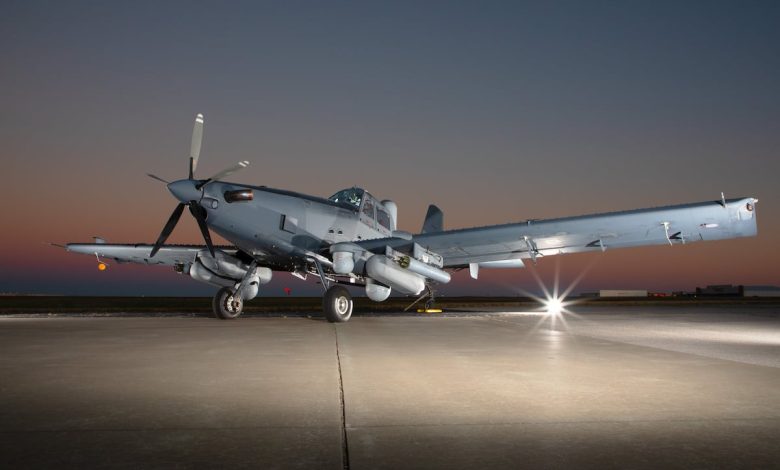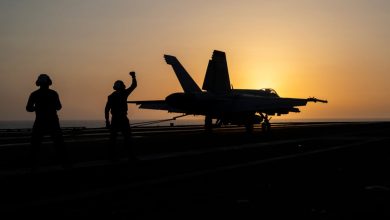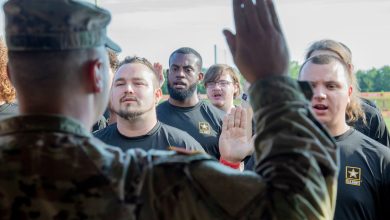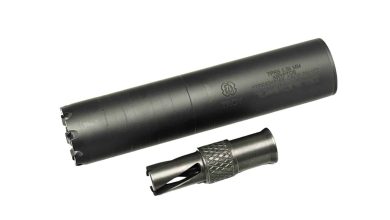US special ops cuts armed overwatch buy, still needs to justify need

U.S. Special Operations Command cut its desired purchase of 75 armed overwatch aircraft to 62 following a recommendation last year from a government watchdog to slow down the program’s acquisition.
Now, in a recent update to its recommendation, the Government Accountability Office noted that while the number of requested aircraft had been reduced, U.S. Air Force Special Operations Command, or AFSOC, officials still hadn’t justified why they need that many aircraft.
The armed overwatch program aims to field fixed-wing aircraft for AFSOC to deploy to austere locations, Defense News previously reported. The current aircraft at the program’s center is the AT-802U Sky Warden, a single-engine, two-person platform made by L3Harris Technologies and Air Tractor.
The command expected to spend $2.2 billion to buy the originally requested 75 aircraft, which replaces the U-28 Draco.
RELATED
SOCOM had purchased 16 Sky Wardens as of last year, with plans to purchase another dozen this year, Defense News reported.
The most recent update, published Sept. 5, notes SOCOM has plans to divest two of its intelligence, surveillance and reconnaissance, or ISR, platforms. However, those platforms were used to support armed overwatch.
The watchdog “found that SOCOM has not taken steps to plan for, or add, critical ISR capabilities provided by soon-to-be divested aircraft,” according to the GAO report.
SOCOM also failed to address risks associated with losing those capabilities if the new armed overwatch aircraft didn’t have them as part of the platform’s fielding, the report found.
The armed overwatch program’s austere mission means that developers must provide an aircraft with minimal logistics and support needs.
The aircraft itself must be able to give ground troops close air support, precision strike and ISR capabilities, according to the report. It’s primarily expected to be used in such roles in counterterrorism and irregular warfare missions, according to program information.
The GAO report stated SOCOM “concurred” or “partially concurred” with its six major recommendations.
Those recommendations included reevaluating the number of aircraft needed; limiting procurement to the minimum needed for testing until the fleet size is determined; assessing risks to missions if the ISR capabilities are not added; identify challenges to operate and deploy the aircraft; and assess whether the program remains an affordable priority; and update concepts for the types of operations the aircraft might conduct.
Fiscal 2026 is marked in the GAO report as a key year for deadlines such as completing the operational test and evaluation, making a full rate production decision and reaching initial operational capability.
The U.S. Air Force began a capability assessment in 2017 to evaluate potential light attack aerial platforms for use with coalition partners. At the time, then-Air Force Secretary Heather Wilson told Congress that the purpose was to free up more advanced and costly assets for other tasks.
Wilson cited an example of F-22 fighter jets being used to strike a drug laboratory in Afghanistan — a mission that could have been accomplished with a less sophisticated platform at a lower cost.
After a series of experiments, the program transferred to SOCOM. In 2021, the command filed its request for 75 aircraft, according to a Congressional Research Services report.
The per-hour operating cost of an aircraft like the Sky Warden is about 2% to 4% of that of advanced fighters, the report noted.
Todd South has written about crime, courts, government and the military for multiple publications since 2004 and was named a 2014 Pulitzer finalist for a co-written project on witness intimidation. Todd is a Marine veteran of the Iraq War.
Read the full article here







